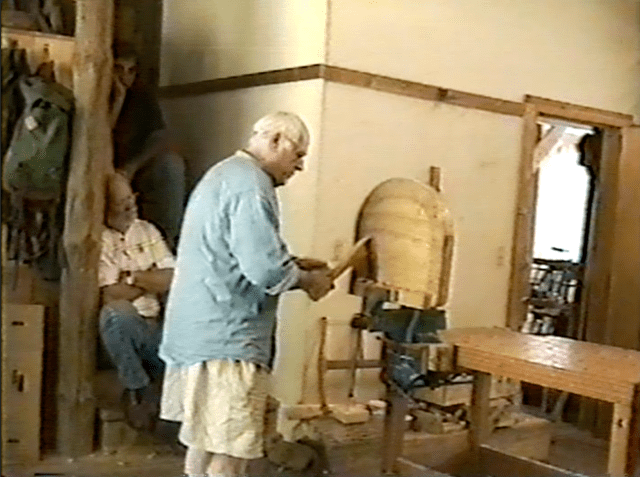Carpenters are an integral part of the building trades. There is almost always demand for carpenters, so there are many opportunities to get the skills and experience required to grow in this field. Learn what type of work you’ll do on this career path, plus what steps it takes to become a carpenter.
Overview of carpentry
The field of carpentry is diverse and can include small-scale projects like installing trim to large-scale projects like framing houses. Here’s a brief overview of a few different types of carpentry:
- Framing or “rough” carpentry. Framers build the structures of a house and install exterior doors and windows. A neat finish isn’t required because the wood will be covered, often by drywall or some other type of final product.
- Finish carpentry. Finish carpenters focus on the numerous wood details that complete the interior of the home. Finish carpentry includes a number of things, including:
- Interior trim and millwork, such as baseboards, stair railings, crown molding and casing around doors and windows.
- Cabinetry, built-in furniture, and other wood details.
Introduction to Interior Finish Carpentry
$75.00 USD | 53M
Preview Course
A carpenter differs from a general contractor. A general contractor typically oversees sub-contractors working on a large project. A carpenter can be one of these sub-contractors.
What does a carpenter do?
The day-to-day work of a carpenter can vary greatly. Carpenters—especially framers—need to know how to read blueprints. Finish carpenters might work on projects from finishing stairs to installing moulding to building and installing cabinets. All carpenters must use different types of power tools, including saws, drills, sanders, and routers.
As of January 2022, Jobs2Build reports an annual median salary of $41,240. This can vary based on location and work experience; for instance, expert level carpenters can average over $50k per year.
What skills does a carpenter need?
To become a carpenter, you’ll need the following skills:
- Ability to safely use hand tools and power tools
- Basic construction math
- Knowledge of national and local building codes
- Knowledge of different types of woods and which ones are suited for various projects
- Ability to estimate time and costs involved for projects
- Ability to read blueprints
How to become a carpenter
It takes several years of education and experience to work as a full-time carpenter. These key four steps give you an idea of what it takes to succeed in this field.
Step 1: Earn a high school diploma or GED. While you don’t need a college degree to become a carpenter, you do need to reach high school graduation or earn a GED. One reason for this requirement is because carpentry requires many basic math skills, like calculating angles. Additionally, most carpentry programs offered at technical schools also require a high school diploma or GED for admission.
Carpenters are an integral part of the building trades. There is almost always demand for carpenters, so there are many opportunities to get the skills and experience required to grow in this field. Learn what type of work you’ll do on this career path, plus what steps it takes to become a carpenter.
Overview of carpentry
The field of carpentry is diverse and can include small-scale projects like installing trim to large-scale projects like framing houses. Here’s a brief overview of a few different types of carpentry:
- Framing or “rough” carpentry. Framers build the structures of a house and install exterior doors and windows. A neat finish isn’t required because the wood will be covered, often by drywall or some other type of final product.
- Finish carpentry. Finish carpenters focus on the numerous wood details that complete the interior of the home. Finish carpentry includes a number of things, including:
- Interior trim and millwork, such as baseboards, stair railings, crown molding and casing around doors and windows.
- Cabinetry, built-in furniture, and other wood details.
Introduction to Interior Finish Carpentry
$75.00 USD | 53M
Preview Course
A carpenter differs from a general contractor. A general contractor typically oversees sub-contractors working on a large project. A carpenter can be one of these sub-contractors.
What does a carpenter do?
The day-to-day work of a carpenter can vary greatly. Carpenters—especially framers—need to know how to read blueprints. Finish carpenters might work on projects from finishing stairs to installing moulding to building and installing cabinets. All carpenters must use different types of power tools, including saws, drills, sanders, and routers.
As of January 2022, Jobs2Build reports an annual median salary of $41,240. This can vary based on location and work experience; for instance, expert level carpenters can average over $50k per year.
What skills does a carpenter need?
To become a carpenter, you’ll need the following skills:
- Ability to safely use hand tools and power tools
- Basic construction math
- Knowledge of national and local building codes
- Knowledge of different types of woods and which ones are suited for various projects
- Ability to estimate time and costs involved for projects
- Ability to read blueprints
How to become a carpenter
It takes several years of education and experience to work as a full-time carpenter. These key four steps give you an idea of what it takes to succeed in this field.
Step 1: Earn a high school diploma or GED. While you don’t need a college degree to become a carpenter, you do need to reach high school graduation or earn a GED. One reason for this requirement is because carpentry requires many basic math skills, like calculating angles. Additionally, most carpentry programs offered at technical schools also require a high school diploma or GED for admission.
Step 2: Complete a trade school program. Next, you’ll enroll in a training program. This isn’t a requirement in order to work as a carpenter, but extra education can give you a competitive edge when applying to jobs—and you could even boost your income. You can enroll in an associate’s degree program or opt for a certificate. Depending on your schedule, you could even take classes while working as an apprentice.
Step 3: Start a carpentry apprenticeship. The biggest component of becoming a carpenter is completing an apprenticeship program. This is where you get the hands-on experience needed to work on your own. Most apprenticeships last for around four years and are paying positions. The exact time requirements depend on your state licensing requirements. In many areas, you’ll need to complete 8,000 of training, totalling 2,000 hours a year for a four-year program.
In addition to learning woodworking techniques during an apprenticeship, you’ll also learn safety requirements and building codes. Unlike some other trades, most states do not have formal licensing requirements for carpenters (although a few do). If you work on projects over a certain budget amount, however, you may need to be licensed as a contractor. Check your state for exact details.
Step 4: Become a master carpenter. Once you’ve gained years of on-the-job experience and have a working knowledge of all types of carpentry, you may be considered a master carpenter. Whether or not there is a formal designation depends on your state. But even if there’s not a formal license for master carpenters, it’s generally agreed that the title is possible when you’ve maxed out your skills in the field.
Working as a carpenter lets you be active every day and oftentimes tap into your creativity. It’s a dynamic career path that can be extremely rewarding; plus, there’s substantial room for salary growth as you gain experience over the years.
MT Copeland offers video-based online classes that give you a foundation in construction fundamentals with real-world applications, like interior finish carpentry. Courses include professionally produced videos taught by practicing craftspeople, and supplementary downloads like quizzes, blueprints, and other materials to help you master the skills.
Top Courses
How to Read Blueprints

Construction Math

Introduction to Cabinetry

Commercial Blueprints

How to Build Shaker Cabinets












